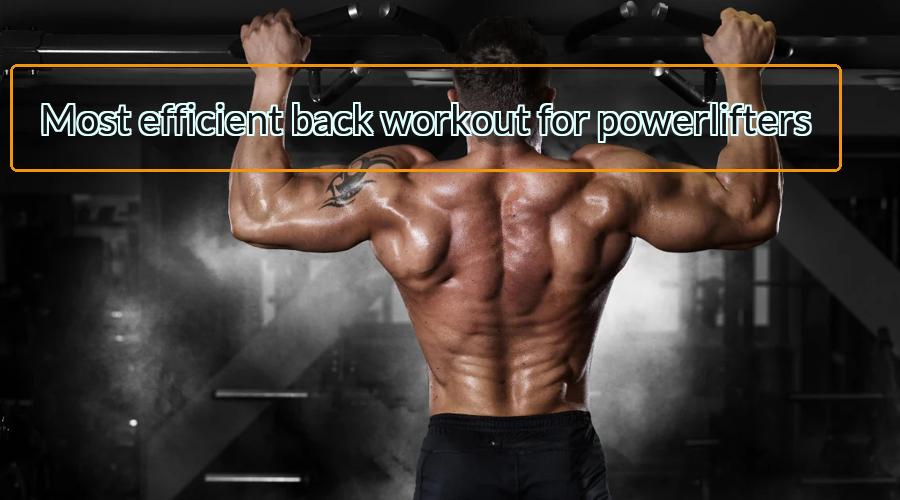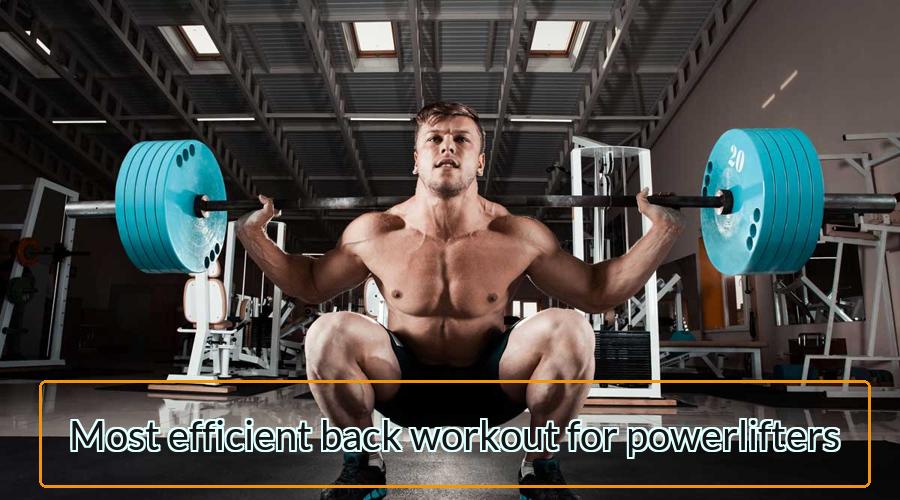
Back workouts are essential for powerlifters who need to build strength and power. A well-designed back routine can be the difference between success and failure in powerlifting. However, finding an effective back workout that targets all the right muscles can be a challenge. This article will provide a comprehensive overview of the most efficient back workout for powerlifters, designed to help you reach your goals quickly and safely.
How do powerlifters train back?
Powerlifting is a strength sport that involves performing three main lifts: the squat, bench press, and deadlift. A powerlifter’s back workout is an essential part of their training regime to increase performance in these lifts. So how do powerlifters train back?
Most powerlifters focus on building a strong lower back by working the muscles in that area. The most popular exercises for this are Romanian deadlifts, good mornings, bent-over rows, weighted hyperextensions, pull-ups and chin-ups. All of these exercises target the lower back and surrounding muscles to improve strength and stability during the big three lifts – squats, bench presses and deadlifts. Powerlifters will also include some isolation exercises for their lats such as lat pulldowns and single arm rows to maximize muscle growth in this area.
Warming up before back workout for powerlifters
A strong and powerful back is essential to achieving success in powerlifting, so it’s important that powerlifters make sure to warm up properly before any back workout. Warming up helps prepare the body for the physical stress of exercise, allowing powerlifters to perform at their best with less risk of injury. Stretching and a light aerobic activity like jogging or jumping rope are great ways to get the blood flowing and muscles loosened up before beginning a back workout.
Dynamic stretching is also an ideal way to warm up, as this type of stretching involves moving your limbs through a full range of motion while gradually increasing intensity. Examples include arm circles, leg kicks, hip circles and torso twists. Dynamic stretches help increase flexibility in areas used during heavy compound lifts like deadlifts and barbell rows which are often part of a powerlifter’s back routine.
Read more about BCAA Drinks

The goal of back workout for powerlifters
Powerlifters must have a strong back in order to perform their lifts correctly, and various exercises can help build that strength. Back workouts are an important part of the overall powerlifting training regimen. When working out the back muscles, powerlifters should focus on using heavier weights with fewer repetitions to maximize strength gains.
The goal of a typical back workout for power lifters includes building muscle size and activating all major muscle groups in the back area, such as the latissimus dorsi (lats), trapezius (traps), rhomboids, erector spinae (lower back) and teres major/minor. To achieve these goals, powerlifters typically incorporate compound exercises into their routine such as deadlifts, rows and pull-ups. These exercises work multiple muscles at once while also allowing for heavy weight to be used safely.
Benefits of back workout for powerlifting
Exercising your back is an important part of successful powerlifting. Without the right back workout, you won’t be able to lift as much weight or achieve the kind of strength and definition you are looking for. Here are some of the benefits that come with a good back workout for powerlifters.
A strong back is vital to support precious muscle mass while working on heavy lifts such as squats and deadlifts. By strengthening your muscles in this area, you can make sure that you have enough stability to move heavier weights with greater ease and accuracy. Additionally, exercises like cable rows, pulldowns or lat pull-overs help improve posture, improve overall balance and increase flexibility in the spine region. This will help prevent any potential injury during future workouts or competitions.
(https://barbend.com/wp-content/uploads/2022/08/Untitled-design-2022-08-25T103302.427.png)
Tips for training back
When it comes to working the back, powerlifters need to be aware of their form and technique. Building a strong and muscular back can take time, but the best way to start is by following a few simple tips. Here are some essential training tips for powerlifters looking to get their back into shape.
First and foremost, it’s important that powerlifters use proper form when performing exercises such as rows or pull-ups. Poor form can lead to injury or an uneven development of muscles, so make sure you know what you’re doing before you start lifting weights! Additionally, these exercises should be performed with controlled movements in order to ensure maximum muscle activation.
Secondly, always warm up before beginning your workout in order to prepare the body for heavy lifting.
Type of exercises for back workout
Exercises for a powerlifter back workout vary depending on the goals of the athlete. Whether you are looking to increase strength, size, or improve your overall technique, there are specific exercises that will help you reach those goals. This article will discuss some of the best exercises for a powerlifter back workout.
The deadlift is the staple exercise for any powerlifter and should be included in any back workout program. It is an effective full-body exercise that works multiple muscle groups including your glutes, hamstrings and lower back muscles. Additionally, it increases core stability and strengthens your grip which is important when lifting heavy weights. Incorporating different variations such as sumo-style deadlift or trap bar deadlift can add variation to your routine and help prevent boredom or plateaus in progress.
Read more about HIIT after Lifting

Equipment for powerlifter back workout
Equipment for powerlifter back workout is essential for any athlete wanting to increase their strength and maximize the benefits of a dedicated workout routine. Having the right equipment can make all the difference when it comes to perfecting form and maximizing gains.
The most important piece of equipment for any powerlifter looking to develop their back muscles is a barbell equipped with plates. This allows them to engage in exercises such as pullups, bent-over rows, deadlifts and shrugs, which are all key exercises in building back strength. Additionally, having a bench or stability ball is beneficial because they help keep the spine aligned while performing certain exercises. Finally, accessorizing with resistance bands can add an extra level of difficulty to traditional bodyweight moves such as inverted rows and lat pulldowns, allowing athletes to further challenge themselves during their workouts.
Effective techniques for powerlifter back workout
Powerlifters require a strong back to lift heavy weights and compete at the highest level. A well-rounded workout plan for your back is essential to maximize performance. Here are some effective techniques for a powerlifter back workout that can help you reach your goals.
The first technique is to focus on compound movements, such as deadlifts and bent-over rows, which work multiple muscles in the back simultaneously. These exercises will increase strength and muscle size by recruiting more muscles than isolation exercises. In addition, these exercises also build core stability which will improve overall form when lifting heavier weights.

Another helpful technique for a powerlifter’s back workout routine is to incorporate pull-ups with different grips (overhand, underhand or neutral) into their training program.
What are the best powerlifting back workouts?
Deadlifts, bent-over rows, and pull-ups are some of the best powerlifting back workouts. These exercises target the entire back and are great for building strength and size. Be sure to use proper form when performing these exercises to ensure safety and get the most out of your workout. Additionally, adding in cable rows, lat pulldowns, and reverse flys can help you work different muscles in your back.
What are the benefits of powerlifting back workouts?
Powerlifting back workouts can help improve posture, strengthen the core, and build muscle mass. Additionally, they are great for improving overall strength and stability. Powerlifting back workouts also help to reduce the risk of injury and improve your performance in other sports or activities. Finally, they can help to increase your confidence and self-esteem.
How many sets and reps should I do for a back workout?
It depends on your goals and current fitness level. Generally, 3-4 sets of 8-12 reps with a challenging weight is a good place to start. For more advanced lifters, 4-5 sets of 6-10 reps can be beneficial. Try to focus on form and technique over the amount of weight you lift.